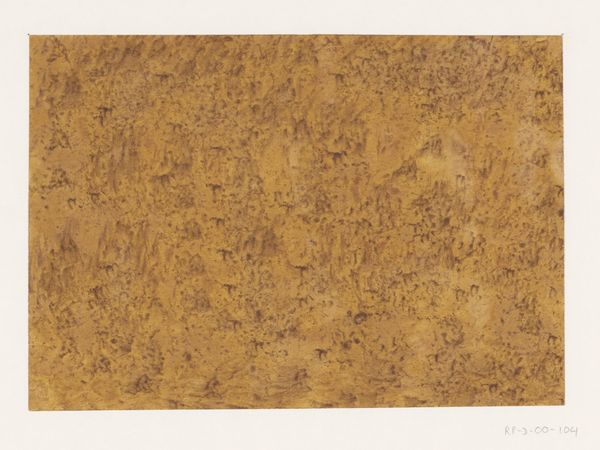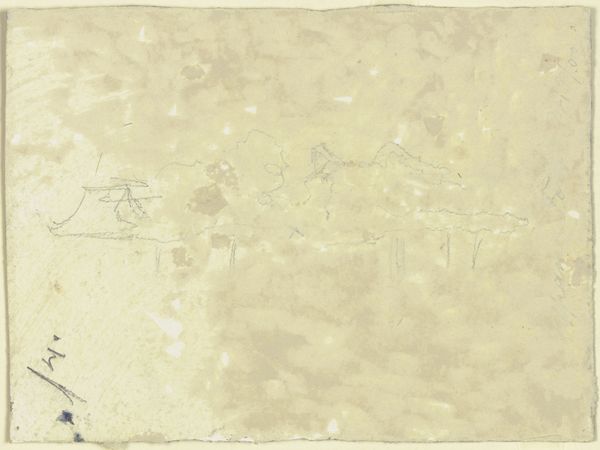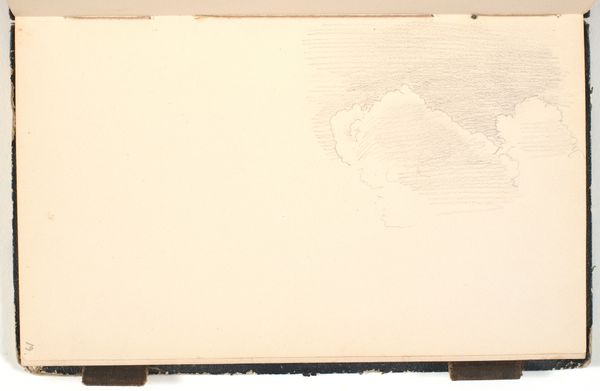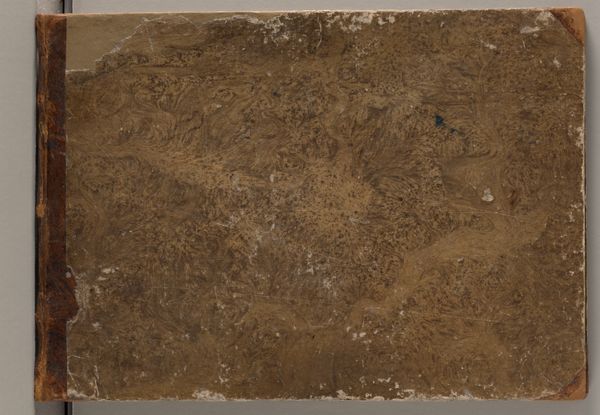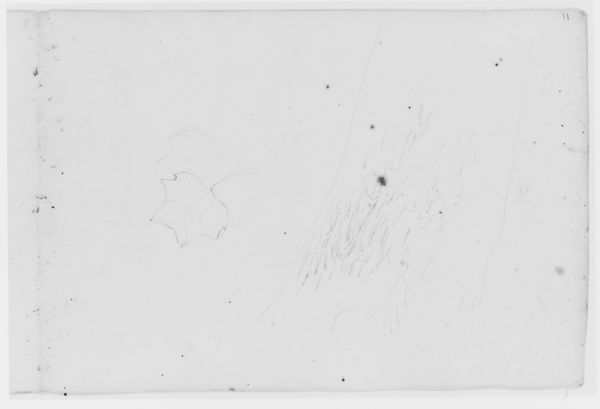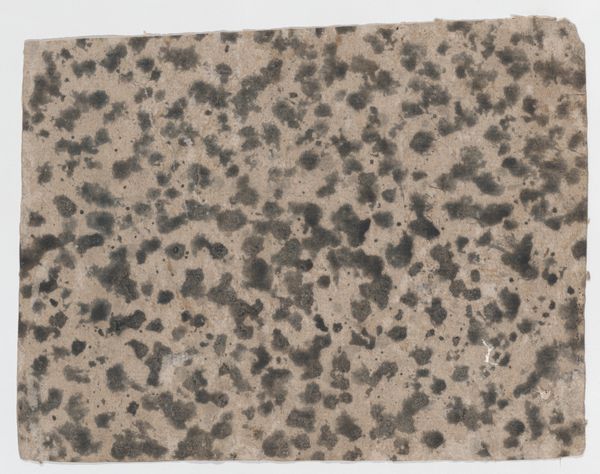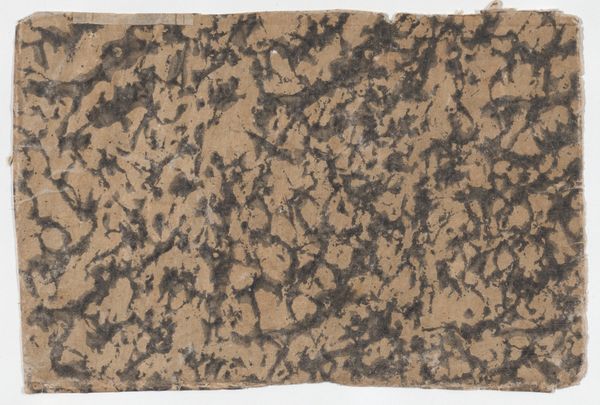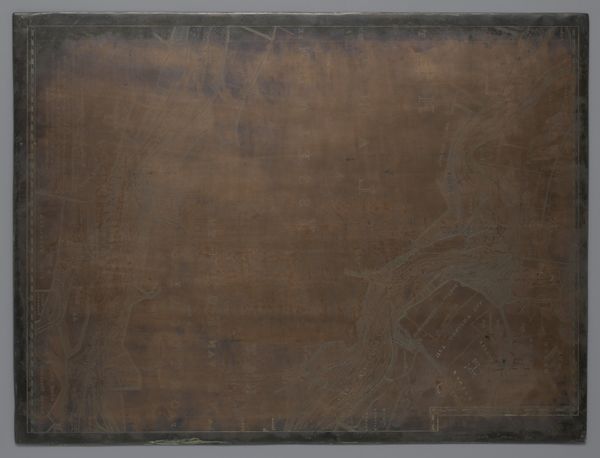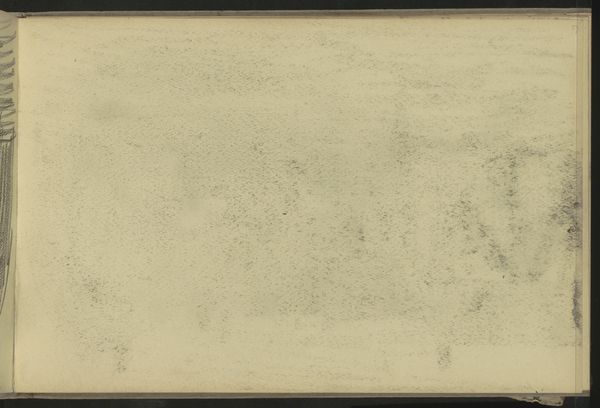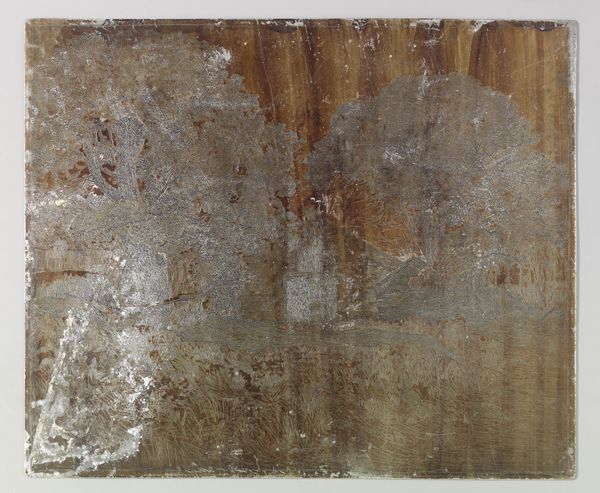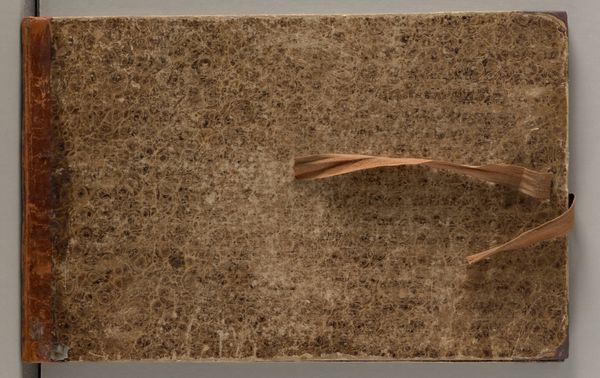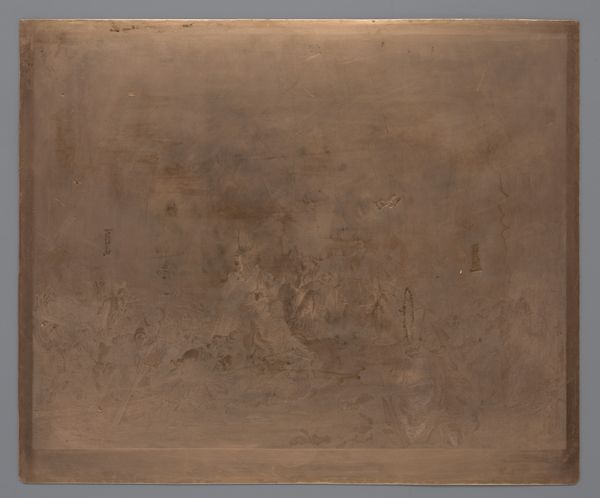
drawing, mixed-media, collage, textile, paper, ink
#
portrait
#
photo of handprinted image
#
drawing
#
type repetition
#
mixed-media
#
homemade paper
#
paper non-digital material
#
collage
#
ink paper printed
#
light coloured
#
hand drawn type
#
textile
#
paper texture
#
paper
#
ink
#
chalky texture
#
folded paper
#
abstraction
Dimensions: height 30 mm, width 55 mm
Copyright: Rijks Museum: Open Domain
Curator: Before us we have "Snippers van het manuscript van Geerlings," or "Fragments of the Geerlings Manuscript," created by Frederik Lambertus Geerling in 1887. It’s a mixed-media collage, combining drawing, ink, textile and paper, it looks like. What are your initial impressions? Editor: It strikes me as a kind of visual archaeology, these little paper shards scattered on the white background. Like someone excavated a buried text. There's a fragility to it that speaks of memory and loss. Curator: Absolutely, a ruin on a pristine page. Geerlings has gathered remnants and carefully placed these evocative pieces, and in so doing he allows us to contemplate text as image rather than communication. Editor: Exactly! Text transformed from something meant to be read, to texture. Consider all the associations with paper: fragility, ephemerality, record-keeping. Each snippit probably has some secret content too. By shredding text from the manuscript, he is obliterating and simultaneously highlighting some unknown message. It's so loaded with paradox. Curator: Indeed! There’s a delicate beauty here. And to further extend on your point, the individual meaning of each shard might not be as important to Geerlings as the impact they each create to complete a larger mosaic, which is the artwork we view now. And as an 1887 piece, these snippets and their scattered placement predict collage as a twentieth century form to be reckoned with. Editor: True, it anticipates the deconstruction that becomes so central to modern art. It's like a proto-Dada gesture, fragmenting meaning itself. It prompts the question of how we can stitch together some truth when surrounded by such fragmentation. Is the art then in the original script? Or what is left for us here today? Curator: And what kind of meaning are we piecing back together when so much history passes and cultures evolve in between then and now? Are we supposed to grasp what Geerlings meant? Or appreciate a timeless beauty in abstract arrangements and deconstruction? Editor: Perhaps the question isn't to reconstruct the original message, but to find meaning in the act of fragmentation itself. The disruption itself has become the symbol! Curator: In the end, a delicate beauty comes through even the chaos of fractured meanings. I will be thinking about that.
Comments
No comments
Be the first to comment and join the conversation on the ultimate creative platform.
